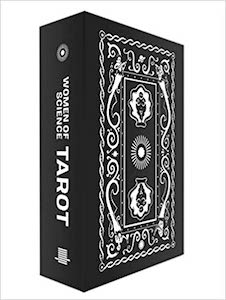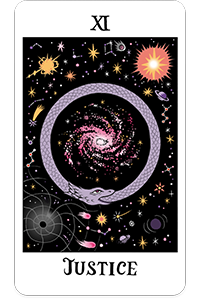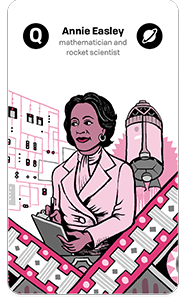
Gaia Alchemy: The Reuniting of Science, Psyche, and Soul, by Stephan Harding
Bear & Company, 1591434254, 320 pages, January 2022
The separation of mind and body that began during the scientific revolution has caused a rippling split between humanity and nature, which has been immensely detrimental to the natural interconnected systems on Earth. While the integration is slowly starting to happen in academic settings (I do hold a Master of Social Science in Environmental Humanities and Ecopsychology from Viridis Graduate Institute), it’s clear the current scientific paradigm needs greater supplementation to fully understand the interconnectedness of Earth. This arduous task of reconnection is what Stephan Harding sets out to in Gaia Alchemy: The Reuniting of Science, Psyche, and Soul.
Harding describes to readers how a dream in which he meets Old Woman, is the anima munda, or Gaia, who encouraged him to write this book. Meeting this archetypal imagery affirmed his path of writing a book on what he has termed “Gaia Alchemy”. Gaia Alchemy blends depth psychology, alchemy, and Gaia theory, creating a new paradigm aimed at bringing the soul back to science and culture.
“Gaia theory is a scientific understanding of the Earth as a great plantery organism, as a self-regulating complex system; alchemy is the ancient art of personal transformation and nature connection. My quest has been to discover whether we can experience a Gaia that is more vibrant, full of meaning, and alive by alchemizing science, thereby re-ensouling science and our culture and thus freeing both from their analytical dryness.”1
Harding sets off to take the readers through his own personal journey of developing this Gaia Alchemy worldview through psychological, historical, and scientific revelations, along with a good bit of creative imagination. And his method of engaging readers goes beyond just sharing interesting insight, there’s practices to do and exercises to try.
At the start of the book, Harding invites the reader to find their Gaia Place. He describes this as “a place where you can relax and connect deeply to nature, where your heart feels glad, where you’ll make important discoveries, both inner and outer.”2
I liked this concept because I’ve done something similar in the past, when I was training to be a nature-based coach, where I had my own “sit spot” to connect with nature everyday. I feel like developing this special place is key to facilitating one’s awareness of the natural world.
Harding provides plenty of ways to heighten one’s connection to their Gaia place throughout the book. For instance, there’s a really neat meditation to connect with ecological communities of the past, taking one through the evolution from small plants to mammals, through dinosaurs and meteorites, drawing on the alchemical power of calcification. From there, one is invited to experience the alchemical process of dissolution in their Gaia place. The mixture of ecology with alchemy in the meditations is very unique. There’s a special connection that develops between one and their Gaia Place as they move through these inner explorations.
Another really unique aspect of this book is that it’s filled with conversations with Jeffy Kiehl, a climate scientist and licensed Jungian analyst, which provides a multidimensional approach to the topic. Kiehl has written on related topics in his book Facing Climate Change: An Integrated Path to the Future. Harding has done a wonderful job of including Kiehl’s perspective to give readers insight into the broad application of Gaia Alchemy through the thought-provoking dialogue.
While his conversations with Kiehl did actually happen, Gaia Alchemy also features some imaginary conversations too written by Harding as he works to change the narrative of what happened in the split between science and alchemy, mind and body, to envision an alternative outcome. In the chapter “Descartes Meets Alchemy”, Descartes first has a conversation with an alchemist and then famed depth psychologist Marie-Louise von Franz. I feel like this creative revision of Descartes’ perspective really stuck with me as a reader, helping to shift my own view, similar to how a fictional story can ignite change.
I will note that Gaia Alchemy might be a lot for someone unfamiliar with alchemy or depth psychology to take on, but Harding fills the pages with charts, diagrams, and photographs to illuminate the content. As unfamiliar as these concepts may seem, especially to those steeped in a materialistic Western scientific culture, Harding’s work is rich with potential for re-visioning our future. Society needs to change in order to survive, and there’s no better place to start than within. The unification of rationality and intuition, science and soul, is the only way forward.
Alchemy is the perfect access point to the reunion of our material and spiritual world. Here’s an example of Harding’s perceptive writing on the alchemical process of conjunction:
“We experience conjunction in our psychological life when our solar sensing and rationality and our lunar feeling and intuition function well together, bringing a balanced outlook in which we see how causality and synchronicity are at work in the world at large, reinforcing our embeddedness within their immense yet deeply intimate networks of learning and meaning.
Alchemically, conjunction happens between Sol and Luna. It occurs when Sol – the divine transcendental source – fully conjoins with our existence as embodied beings here on Earth (Luna). We experience great clarity, purpose, and joy in those blessed moments when conjunction truly comes upon us, when its deepest meaning actualizes itself in us and we feel a blessed connection with Gaia.”3
This book was a real thrill to read as an ecopsychologist because it gives me hope there’s others out there working towards the integration of holistic sciences, deep ecology, and depth psychology. Harding himself lives in England, where he founded Schumacher College, which offers ecology-centered masters programs. At Schumacher College, Harding serves as Deep Ecology Research Fellow and senior lecturer on holistic science.
I can’t recommend Gaia Alchemy highly enough. For those interested in both the spiritual and natural world, this is an insightful guide to wholeness. Harding is doing and teaching what I believe is the most important work of our time, healing our connection with nature, promoting holistic science, and re-establishing our psychological ties with Gaia. Gaia Alchemy is a roadmap for an uncertain future and is well worth the read.
Alanna Kali is an astrologer, numerologist, and pioneer spirit that loves to explore life through the lens of depth psychology. She has a passion for studying the humanities and social trends. Her academic work is centered upon reuniting body, mind, and spirit through eco-psychology. She loves reading, spending time in nature, and travel.




